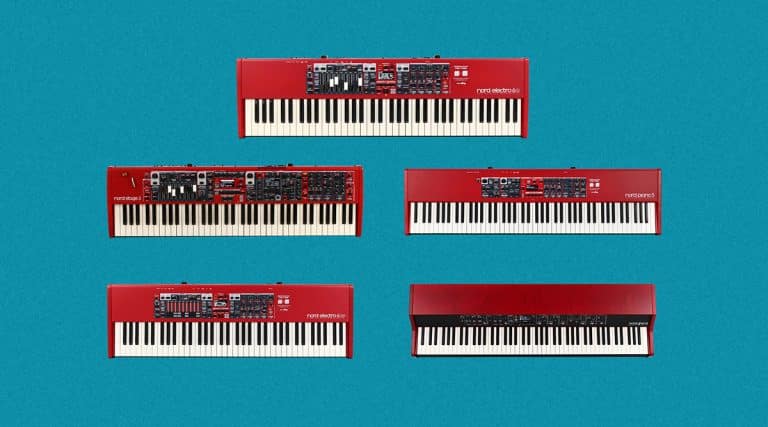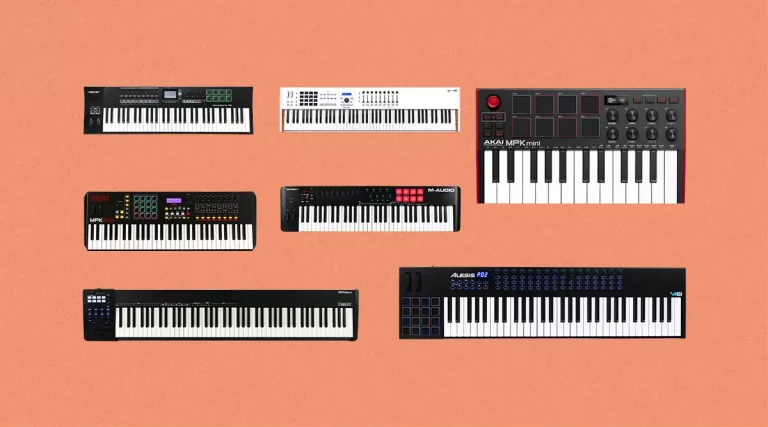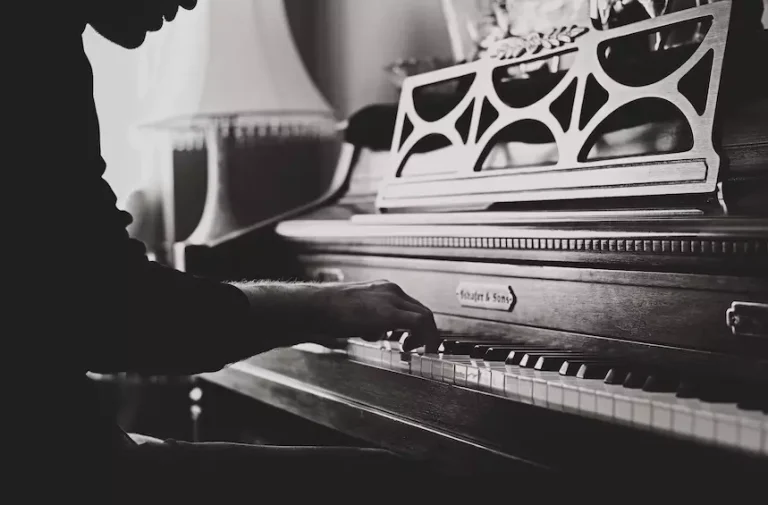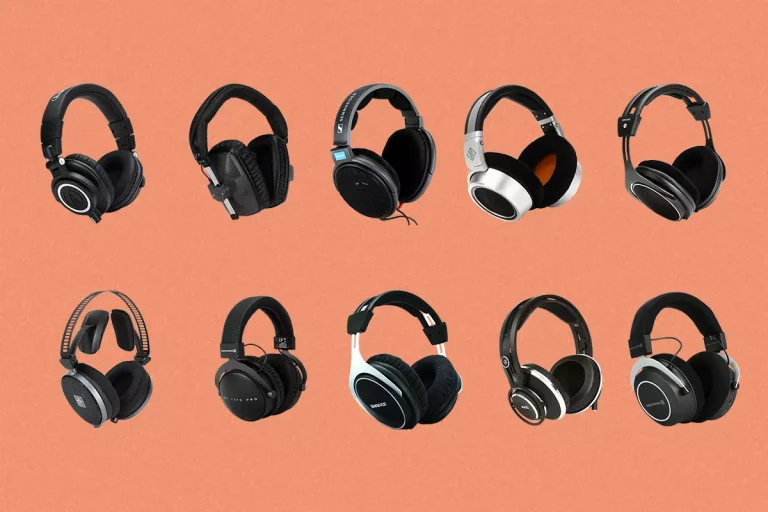The Different Parts Of A Piano: A Beginner’s Guide
The piano is one of, if not the most, popular instruments around the world due largely to its range and versatility. Despite its widespread popularity, many of its players don’t fully understand how a piano is constructed or know its various components.
A piano consists of many different parts, large and small, that work in unison to create the delicate and powerful sounds of a piano. The structure, as well as some parts, differ depending on the type of acoustic piano as there are two kinds: grand and upright.
This guide will explore the differences between the two respective designs and cover all the components of an acoustic piano, grand and upright both.
Table Of Contents
Grand Piano Vs. Upright Piano Construction
While both types of pianos are two forms of the same instrument, they do have several significant differences that affect many aspects, including tone and playability. Both kinds of pianos use largely the same parts, but these parts are either slightly different or arranged in specific ways depending on the type.
The most significant difference is the soundboard and the strings that lay on top of it.
In a grand piano, the soundboard is laid horizontally in the casing, while in an upright it is positioned vertically. One of the benefits of an upright piano is that it takes up less space compared to a grand, due to its verticality.
This does, however, affect the sound. Since a grand piano’s soundboard is larger, its strings are therefore longer.
This means a grand piano’s strings will resonate for longer and are capable of more dynamic range (soft to loud playing) than its upright counterpart. Also, since a horizontal soundboard will resonate upwards and a vertical soundboard will resonate backwards (usually facing a classroom wall), a grand piano will play at a larger volume than an upright one.
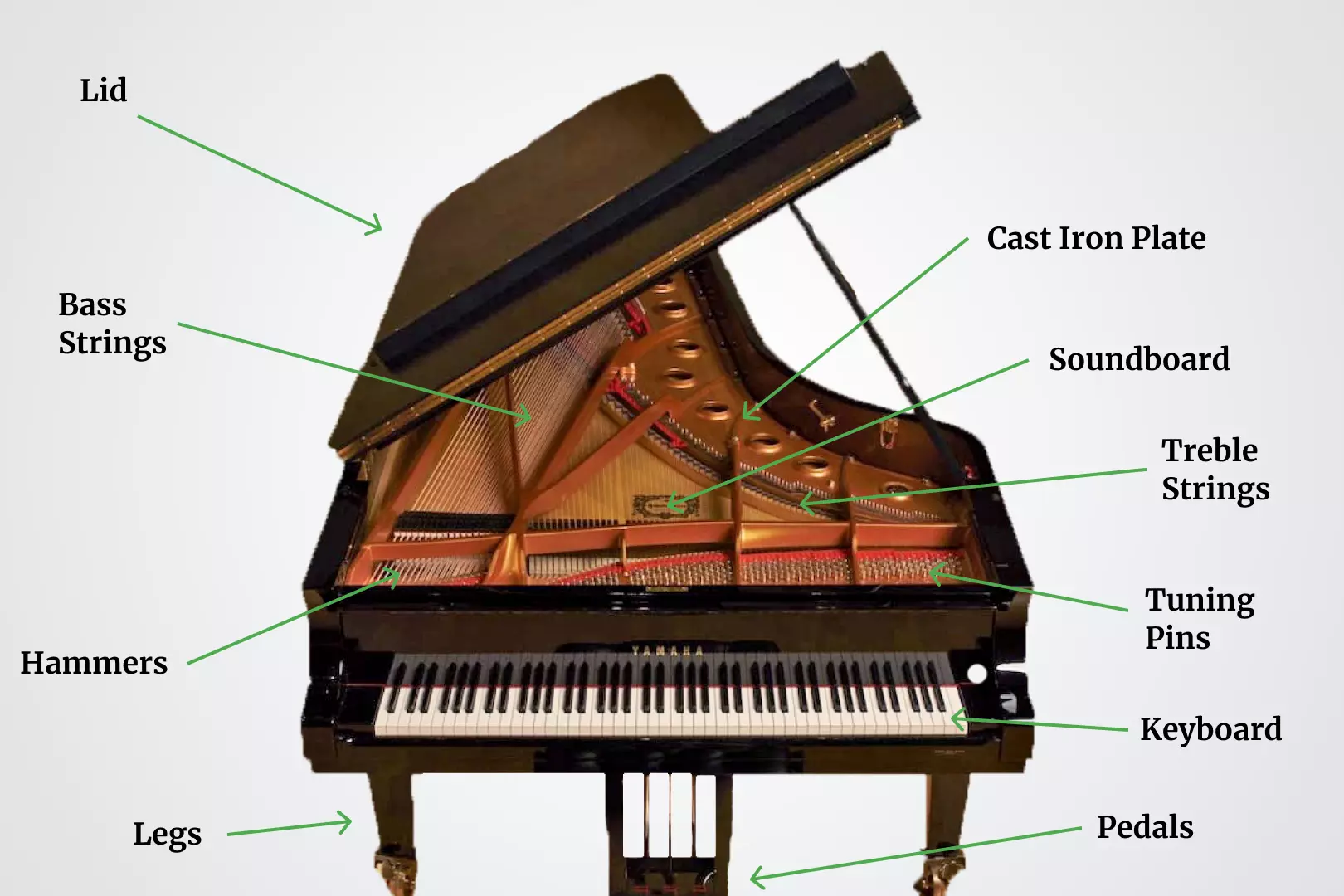
The differences in playability lie largely in their respective keys. When a key on a grand piano is played, a hammer strikes the corresponding string.
Due to its horizontal soundboard, the hammer returns to its original position thanks to gravity. In an upright piano, the soundboard is vertical and the hammer requires a string to return to its natural position.
This gives the keys on an upright piano slightly more resistance than the softer keys of a grand piano. Additionally, the gravity-action on a grand piano allows a pianist to play notes in quick succession much smoother than they could on a spring-action upright piano.
While there are similarities, the last difference between the two types of acoustic pianos are each of their respective three pedals.
Grand Piano Pedals
- Shift pedal (left pedal): Also known as the soft pedal or una corda, it slightly shifts the strings to the right, meaning the hammers strike the strings at a gentler angle, softening the sound.
- Sostenuto pedal (middle pedal): Sostenuto is a selective sustain, meaning that it will only sustain the notes being played when the pedal is pressed.
- Damper pedal (right pedal): Also called the sustain pedal, this lifts all string dampers up and will sustain all notes after it is pressed.
Upright Piano Pedals
- Soft pedal (left pedal): This one moves the hammers closer to the strings, lowering the overall volume.
- Muffler pedal (middle pedal): When pressed, a thin layer of fabric is laid atop the strings, muting the sound significantly. This makes it excellent for practice in sound-sensitive areas.
- Sustain pedal (right pedal): This pedal is identical to the damper pedal on a grand piano. When used, the string dampers disengage entirely and all notes are sustained when played.
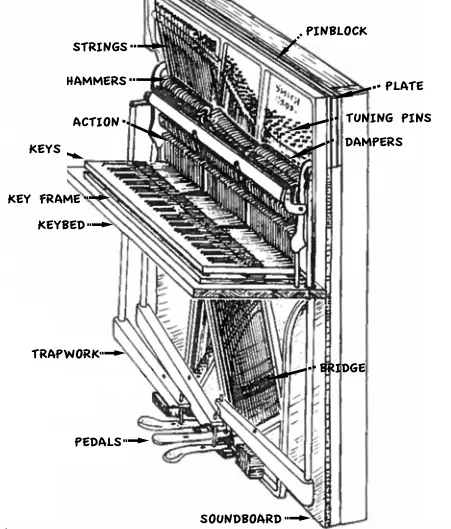
Credit: Piano Technicians Guild
Components Of A Piano
Casing And Lid
The casing is the first thing most people look at when they see a piano. It is the largest component, as it houses nearly everything inside of it, and is typically made by layering many thin pieces of wood on each other.
A shiny veneer is traditionally applied as well, and most acoustic pianos will typically come in black or brown.
A piano’s lid is the only adjustable part of the casing as it can be left open or closed during play.
This comes into play more with grand pianos, as the lid is much bigger and has a greater effect on volume, but the lid can be left open with upright pianos as well for a slight volume increase.
Keyboard
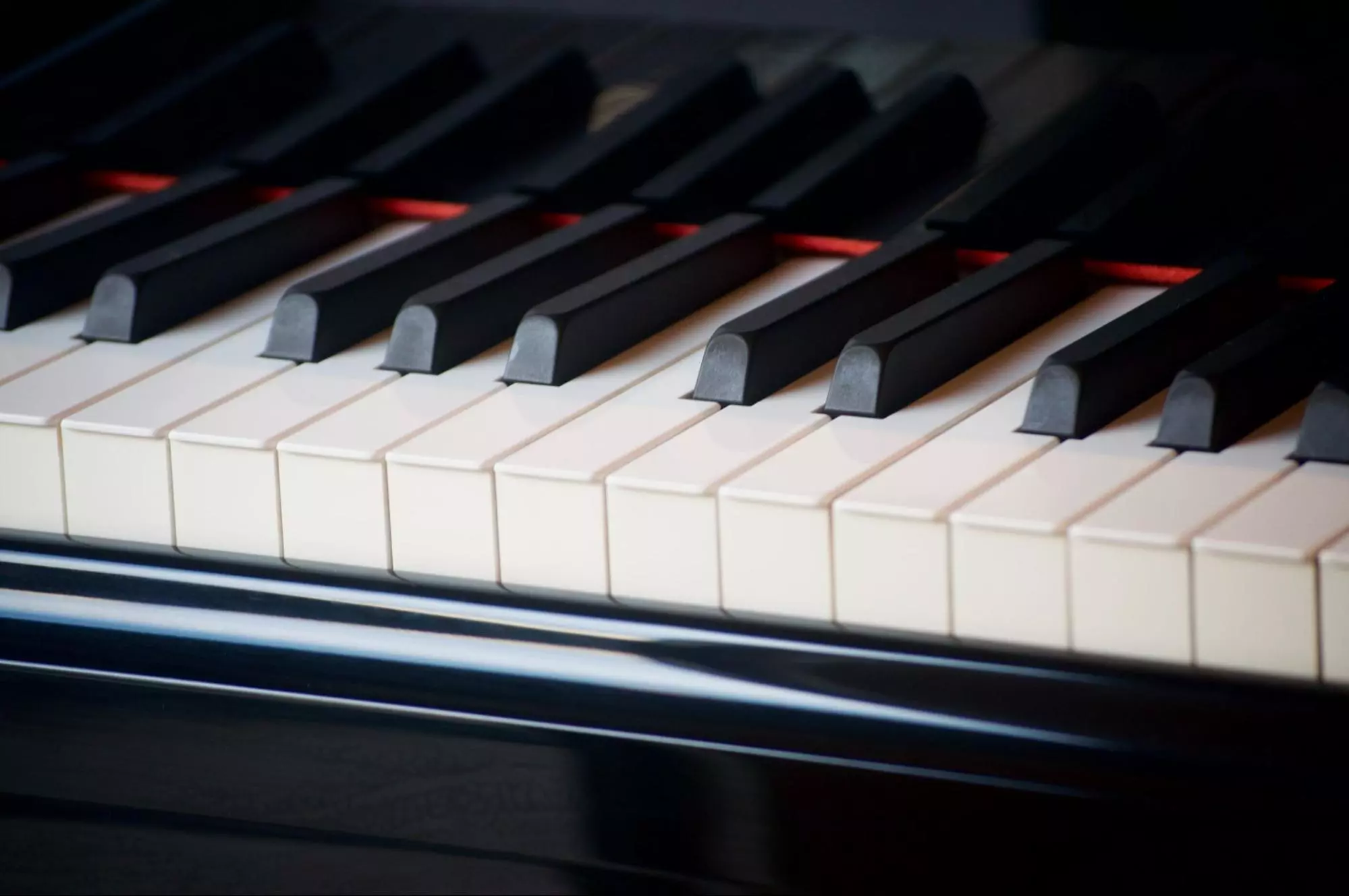
Easily the most iconic part of the piano, the keyboard is where the user plays the instrument and controls which notes are being played inside the casing. There are typically 88 keys on an acoustic piano, with 52 white keys and 36 black keys.
Digital pianos will have more variance in keyboard sizes, but it is rare for a grand or upright piano to have less than 88 keys.
Historically, piano keys were constructed with ivory for the white ones and ebony for black. Since the 1970s, however, these natural materials were phased out for plastic due to poaching and illegal harvesting.
Hammers
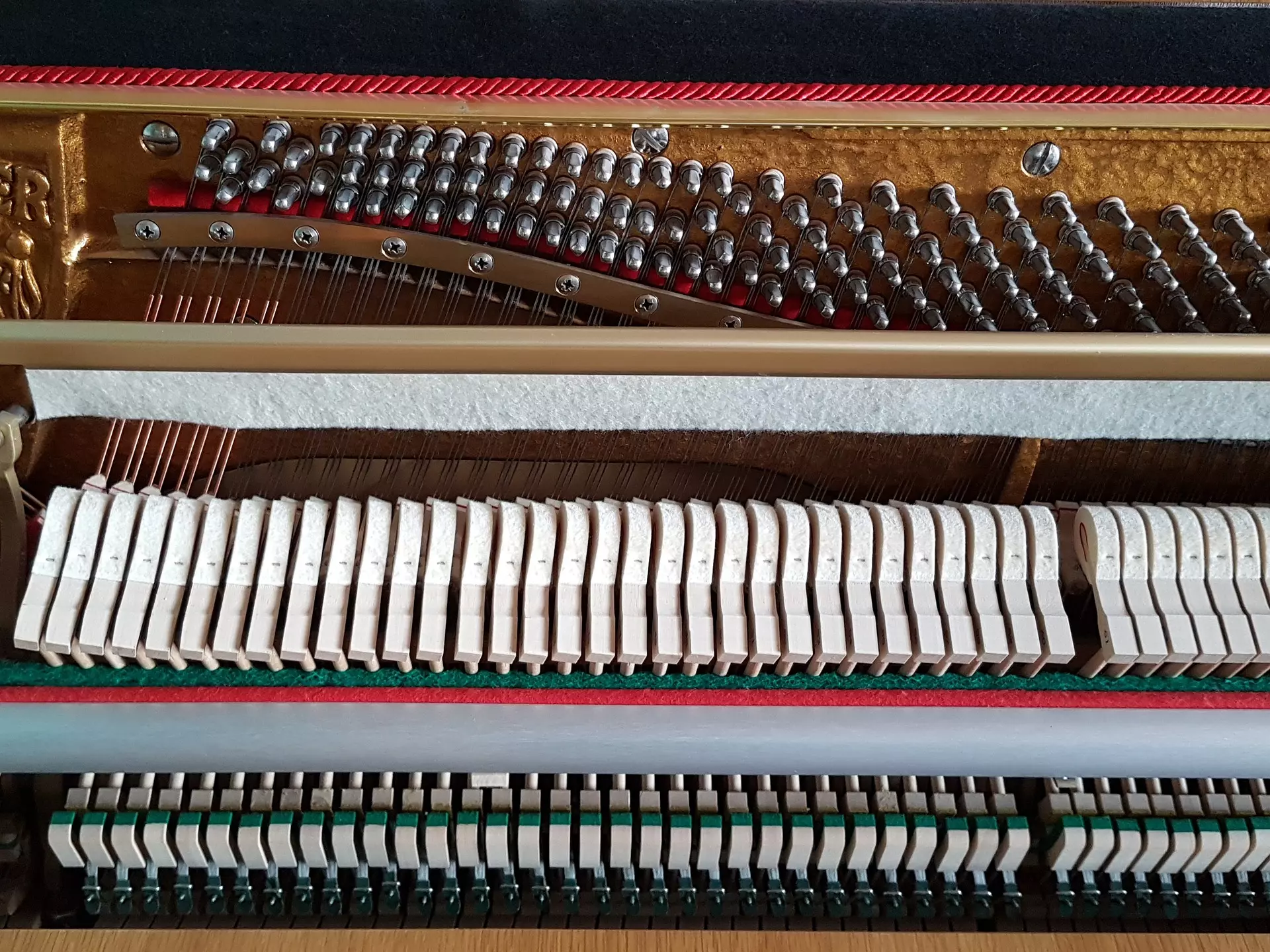
A piano’s hammers are the middleman between the player’s fingers on the keys and the strings inside the casing that the notes resonate from.
When a key is pressed, a hammer strikes the corresponding key and a note is played. This action is why the piano is considered a percussion instrument and not a stringed one, due to the hammers.
The part of the hammer that hits the string is covered in felt, as to not cause damage over time, and are larger for the lower notes on the keyboard as the strings are thicker and require a wider strike.
Strings
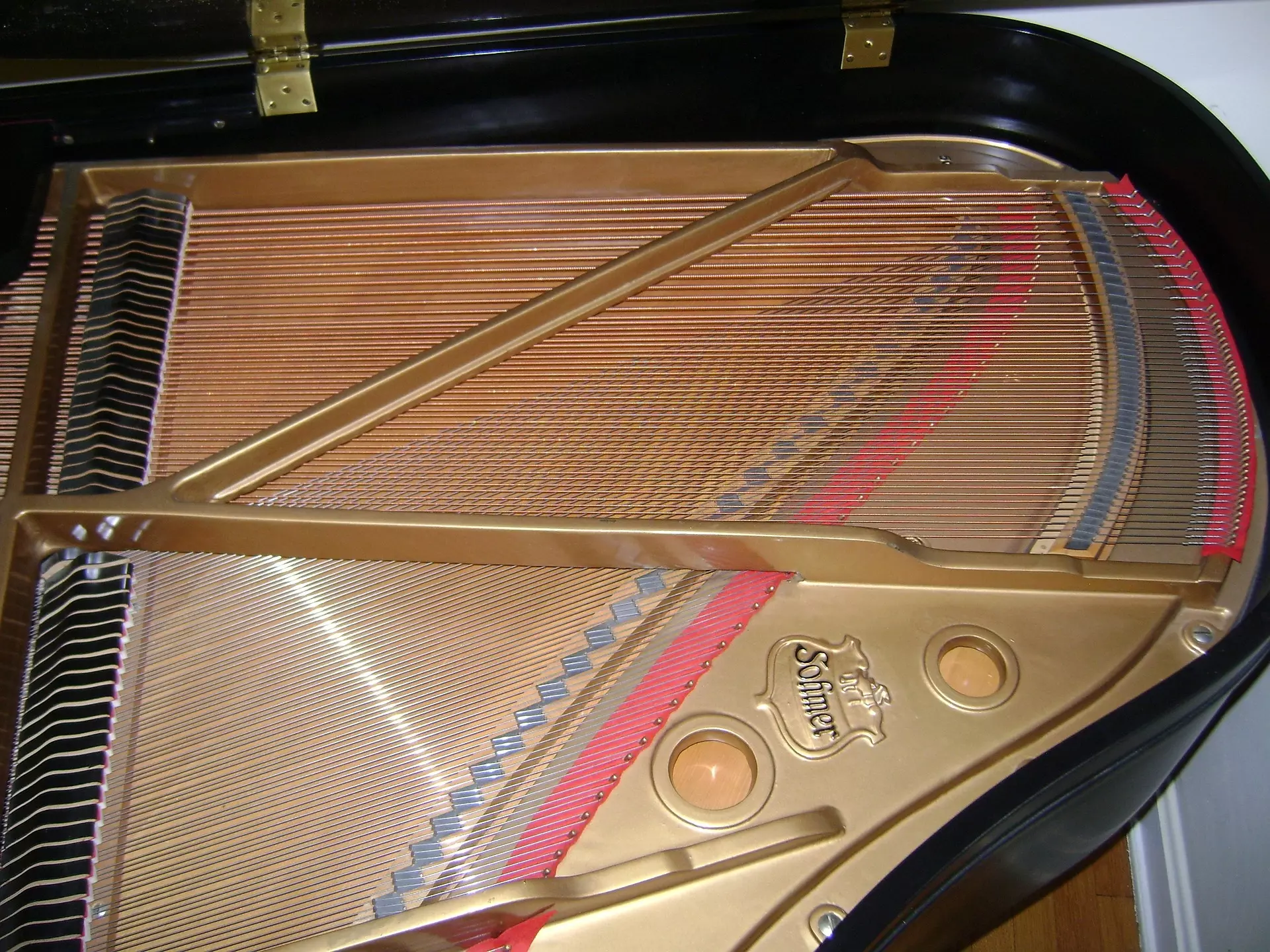
The strings, just like those on a guitar or violin, are long metal wires pulled tight that play notes when struck by the piano’s hammer. As seen in the diagrams above, the strings are longer on the lower (left) end of the keyboard and decrease in length as the pitches increase to the right side of the keyboard.
Another similarity a piano has with string instruments is its need for tuning, just less often (thankfully).
An acoustic piano should be tuned at least once a year, twice if it is your first year owning the piano. This is a difficult process that requires tools and expertise. Piano tuning is typically done by a professional, luckily most music stores offer piano tuning services!
Tuning Pegs
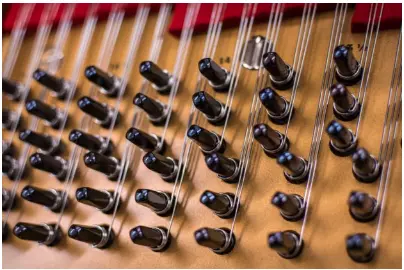
Credit: Chupp’s Pianos
As mentioned in the previous section, piano strings require tuning and the image above shows the tuning pegs. The string wraps around the peg and then it is either tightened or loosened, depending on if the note is sharp or flat.
The image above is only a small section of pegs that would require tuning on an acoustic piano, so it is easy to see why this task is so tedious. If you do not possess the tools or the training, you’re better off hiring an expert.
Soundboard
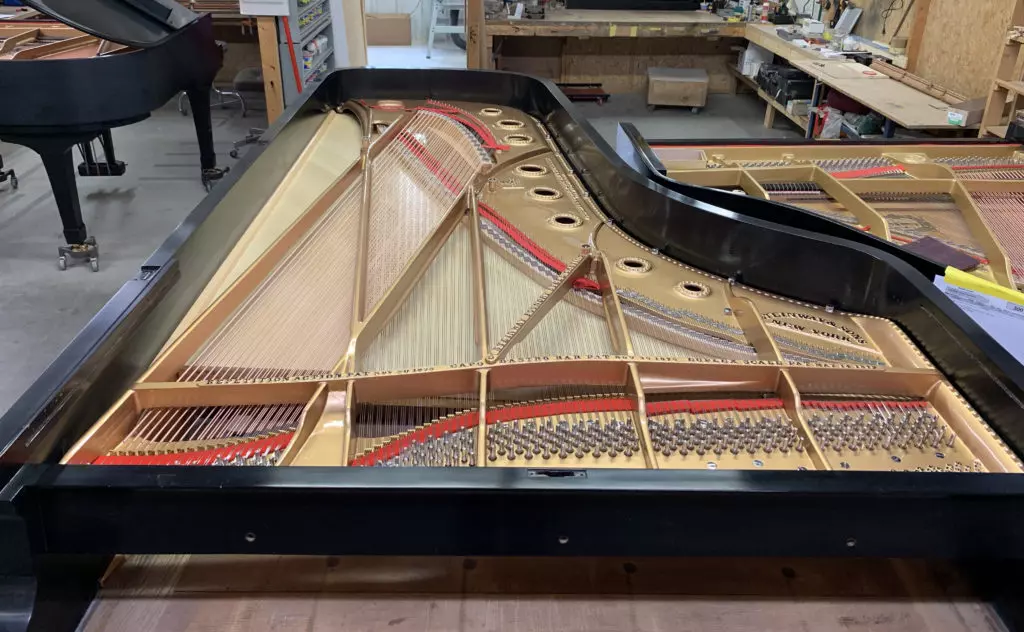
Credit: Reeder Pianos
The soundboard lies below the strings at the core of the instrument and plays a huge role in sound projection. It is a large, thin piece of tonal wood that resonates with the strings once they are played. This increases the natural volume and reverberation of the instrument dramatically.
The type of wood used for soundboards is significant and more often than not pianos will feature a type of spruce for their soundboard. Yamaha, for instance, will typically use either Romanian or Japanese spruce, as well as Alaskan sita.
Bridge
The role of a piano’s bridge is as nuanced as it is important. It is a thin piece of wood that rests across the strings and holds them in place. Most acoustic pianos will have two separate bridges, one of the low to mid-range notes and another for the higher-range notes.
Perhaps even more integral is its role in sound distribution. The bridge makes contact with both the strings and the soundboard, connecting the two and allowing the soundboard to resonate when the strings vibrate.
Pedals
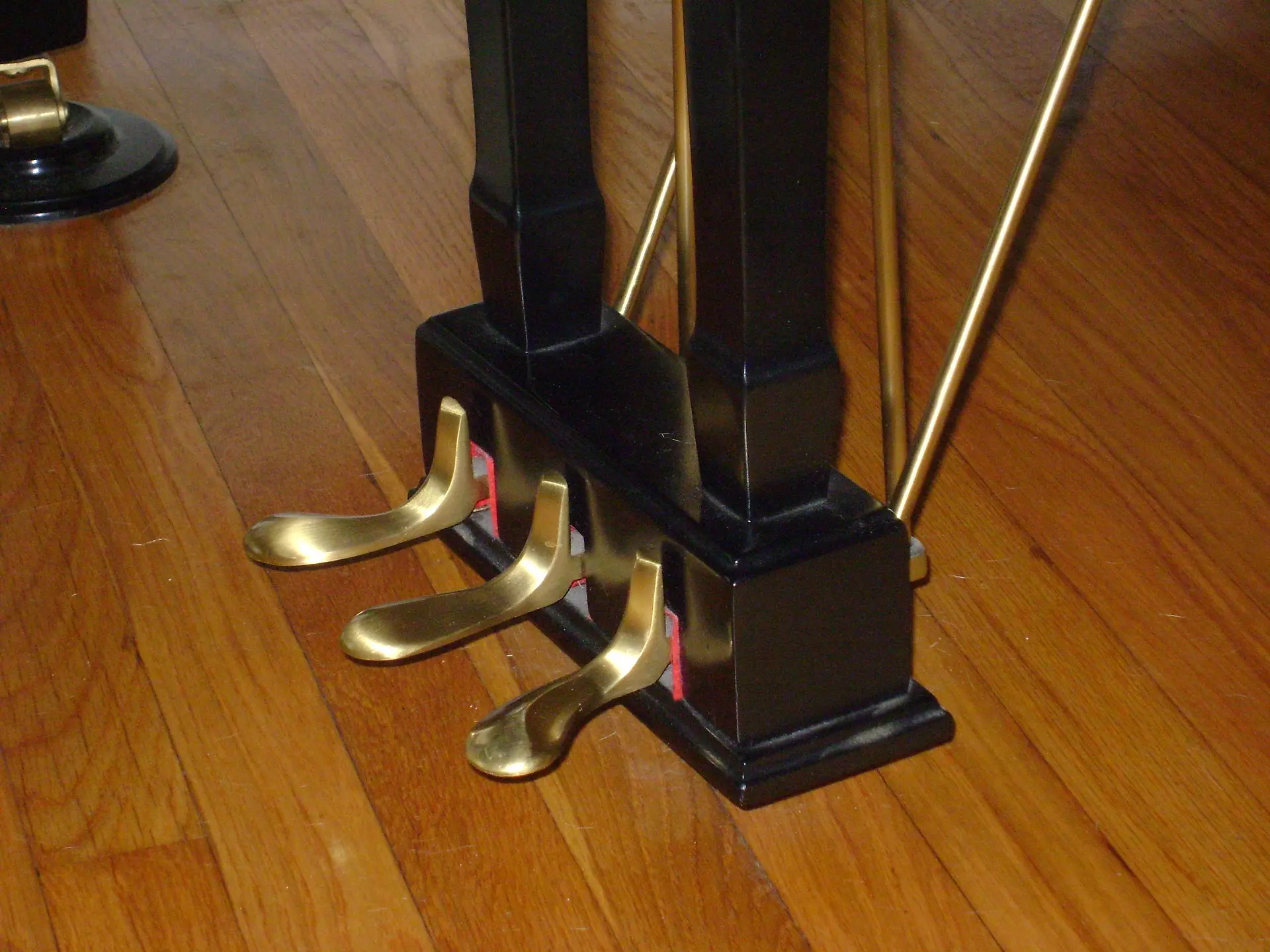
Like the keyboard, the pedals are the only other components of a piano that are externally played. There are three pedals, on both grand and upright pianos, that each have a specific purpose.
As we covered in the section above, the functions of the pedals differ slightly from grand piano to upright, but the general purposes of piano pedals are either to sustain notes or dampen.
Additional Components
Key Block
The key block is simply two pieces of wood on either side of the keyboard that keep it securely in place.
Action
The action is a small device that connects the hammer to the keys and is responsible for the hammer striking the strings and returning back to position.
Keyboard Cover
A long piece of wood, usually on hinges, that rests over the keyboard to protect the keys from dust or scratches. Keyboard covers can be easily raised or lowered, and are typically left raised when not played.
Legs And Wheels
As can be seen on grand pianos, the casings are supported by several legs, which often have wheels on the bottom for easy movement. Upright pianos also have legs with wheels, in addition to their solid bottom panel.
Muffler Felt
Muffler felt is the material that is lowered atop the strings when the soft pedal is pressed. This dampens the strings by forming a thin barrier between them and the hammers.

